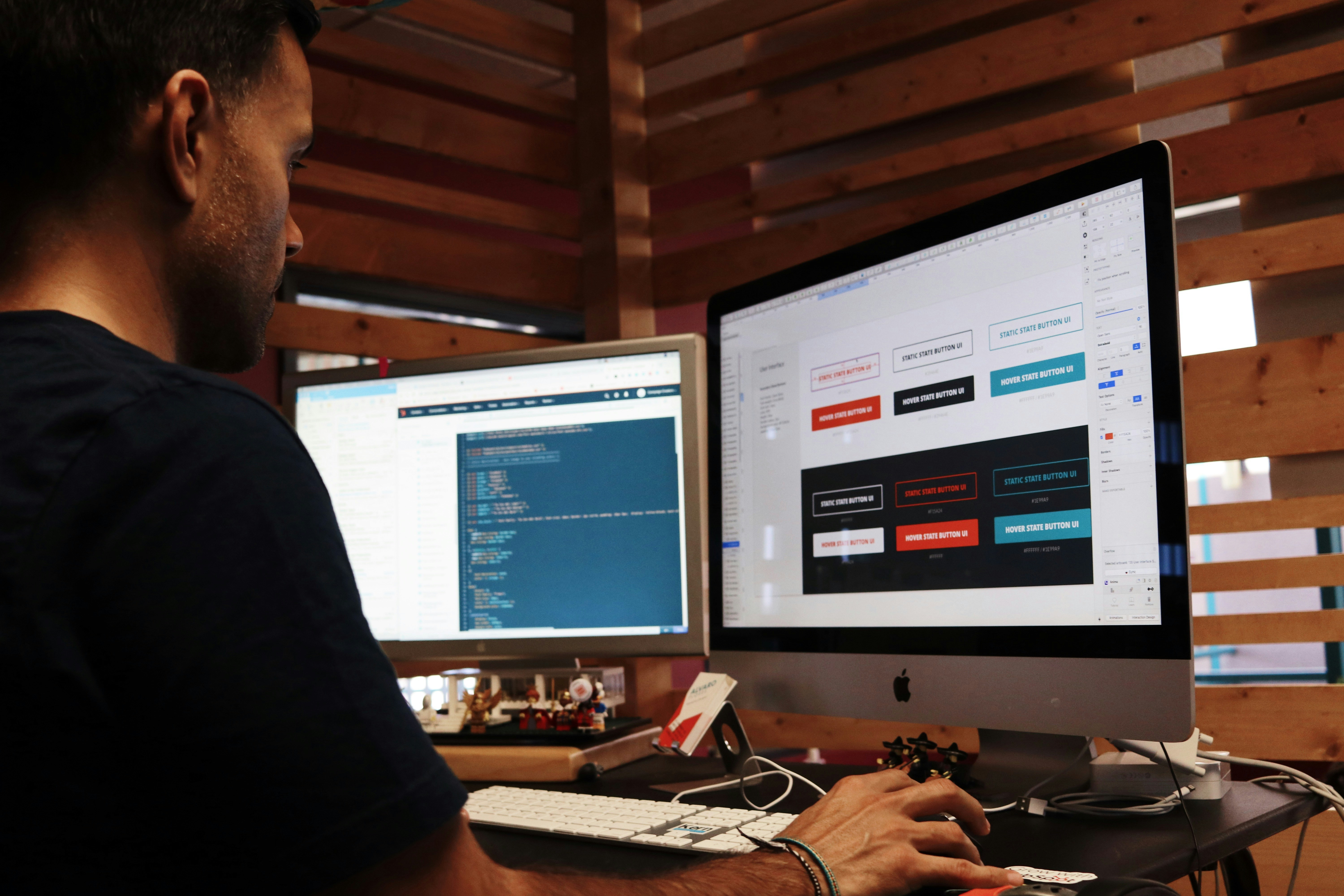Is your business struggling to understand the difference between web design and web development? Many people confuse the two, but they play distinct roles in creating an effective online presence. This article will clarify these roles by defining web design and web development, exploring their key differences, and examining the skills and tools required for each. By the end, readers will have a clear understanding of how to leverage both areas to enhance their website and improve online visibility, solving the confusion that often stifles their online success.
Key Takeaways
- Web design emphasizes creativity, focusing on aesthetics and user interfaces for an engaging experience
- Web development focuses on coding to create functional and interactive elements of a website
- Effective collaboration between design and development enhances overall website performance and user satisfaction
- Understanding user needs is essential for both web design and development to create effective solutions
- Staying informed on emerging trends is important for maintaining a competitive edge online
Defining Web Design and Web Development

Web design focuses on creating the visual elements of a website, including the layout, color schemes, and navigation, ensuring user-friendly experiences, especially on platforms like Internet Explorer. In contrast, web development involves coding and problem-solving to build and maintain functional aspects of a site, such as landing pages and website builders, emphasizing performance and interactivity.
Understanding What Web Design Entails
Web design is an essential aspect that combines creativity and functionality to create an appealing user experience. Designers often utilize tools like Adobe Illustrator to produce visual elements that align with a website’s brand identity, focusing on elements such as layout and color schemes. Alongside technical skills, soft skills play a vital role in understanding user needs and ensuring effective communication throughout the design process.
Understanding What Web Development Involves
Web development focuses on the technical aspects of building and maintaining a website, utilizing tools like Adobe Dreamweaver for coding and design. Developers often implement CSS to style web pages and ensure compatibility across various mobile browsers, enhancing user experience. By integrating features such as animations and analyzing user behavior through analytics, web developers create interactive sites that engage visitors and fulfill business objectives.
Key Differences Between Web Design and Web Development

Web design focuses on creating visually appealing layouts, color schemes, and buttons that enhance user experiences, prioritizing aesthetics. In contrast, web development centers on the functional architecture of a site, managed by skilled programmers who utilize tools like file transfer protocol for performance. Understanding these differences is essential for businesses seeking effective online presence through both design and functionality.
Focus and Objectives of Web Design
The focus of web design is to create visually stunning and user-friendly interfaces that enhance the experience for visitors across various platforms. Designers prioritize elements such as responsive layouts, ensuring websites look great on any mobile device, and optimizing for different web browsers. This design approach is not only important for aesthetics but also plays a crucial role in digital marketing, where effective project management ensures that all visual components align with brand goals and user expectations.
- Creating visually stunning interfaces
- Ensuring responsiveness on mobile devices
- Optimizing for various web browsers
- Aligning design with digital marketing strategies
- Emphasizing effective project management
Focus and Objectives of Web Development
Web development primarily concentrates on creating the functioning elements of a website to enhance user interaction. Web developers utilize programming languages like PHP to build dynamic interfaces that support seamless graphics manipulation and user requests. By integrating tools such as drag-and-drop features, developers streamline the process of site creation for businesses, ensuring efficient and engaging online experiences:
- Create functional website interfaces
- Utilize programming languages such as PHP
- Ensure seamless integration of graphics
- Implement user-friendly drag and drop features
- Focus on enhancing user interaction and engagement
Design Aesthetics vs. Functional Architecture
Design aesthetics focus on the visual appeal of a web page, employing tools like Adobe Photoshop to craft engaging layouts, color schemes, and elements that attract users. In contrast, functional architecture emphasizes the use of markup language and coding to create a responsive and interactive experience that supports user engagement. Understanding the balance between aesthetics and functionality is crucial for businesses looking to enhance their online presence and meet user expectations effectively.
Skills Required for Web Designers and Web Developers

Effective web design requires a blend of creativity and technical expertise, with essential skills focusing on understanding the target audience and creating engaging layouts. In contrast, competent web development involves proficiency in programming languages like jQuery and Angular, as well as knowledge of version control to manage changes. These skills are vital for ensuring an efficient online presence that resonates with users.
Essential Skills for Effective Web Design
Essential skills for effective web design include mastering mockup creation, which helps visualize the layout and functionality before development begins. Designers should also excel in communication design to clearly convey ideas and ensure that user needs are met through usability-focused interfaces. Additionally, research skills play a crucial role in understanding user behavior, allowing designers to create progressive web apps that meet expectations and enhance user engagement.
- Mastering mockup creation
- Excelling in communication design
- Focusing on usability
- Employing effective research skills
- Designing progressive web apps
Essential Skills for Competent Web Development
Competent web development requires a mix of technical skills and a solid understanding of user needs. Programmers should be proficient in languages like TypeScript to create dynamic applications that enhance user experience. Additionally, knowledge of search engine optimization (SEO) plays a vital role in ensuring that websites are easily discoverable, while familiarity with platforms like Webflow can streamline the software development process:
Tools Used in Web Design Versus Web Development

Popular web design tools like Adobe XD allow designers to create visually appealing layouts that resonate with clients, while common web development environments and frameworks, such as Ruby, enable programmers to build dynamic, functional websites. Understanding these essential tools enhances one’s expertise and ensures effective collaboration, ultimately benefiting employment opportunities in both fields.
Popular Web Design Tools and Software
Popular web design tools and software play a crucial role in creating engaging page layouts and ensuring effective, responsive web design. Tools like Adobe XD and Sketch enable designers to craft visually striking elements that align with brand identity while also facilitating seamless collaboration with web development teams. By incorporating features for debugging and integration with databases, these design tools streamline the process of turning creative ideas into functional websites, ultimately enhancing the overall user experience.
- Adobe XD for page layout design
- Sketch for responsive web designs
- Integration capabilities with databases
- Debugging features for seamless collaboration
- Efficient workflow between designers and developers
Common Web Development Environments and Frameworks
Common web development environments and frameworks play a significant role in the landscape of software engineering, providing developers with robust tools needed to build efficient applications. Frameworks such as AngularJS are popular for their ability to create dynamic web applications that enhance user experience design, enabling the development of both websites and mobile apps with ease. Additionally, these environments help streamline coding practices, allowing for the customization needed to meet specific client requirements while ensuring that intuitive and engaging interfaces are at the forefront.
Career Pathways in Web Design and Web Development

Education and training for web designers often focus on user interface design, emphasizing creativity and visual communication skills. Meanwhile, web developers typically learn programming languages such as MySQL and explore concepts related to cloud computing to manage functional aspects efficiently. Understanding these pathways allows individuals to align their skills with job market demands effectively.
Education and Training for Web Designers
Education and training for web designers often involve a focus on graphic design principles and digital architecture, ensuring that learners understand both aesthetics and functionality. Many programs cover vital topics such as accessibility and helping future designers create inclusive web experiences. Statistics indicate that web designers with specialized training can expect competitive salaries as the demand for skilled professionals in this field continues to grow:
Education and Training for Web Developers
Education and training for web developers typically focus on mastering various programming languages and understanding core concepts of web design. Learning to code with languages like HTML, CSS, and JavaScript is essential, as they are the foundation for creating dynamic websites. Additionally, developers often enhance their skills in areas like editing and typography to improve the overall presentation of web content, ensuring visually appealing and user-friendly interfaces.
Future Trends in Web Design and Web Development

Emerging trends in web design are reshaping how brands present their online presence, particularly through mobile web optimization that caters to various operating systems. Innovations in web development are enhancing the overall look and feel of websites, ensuring they meet modern user expectations. Insights from the Bureau of Labor Statistics highlight the increasing demand for skills in these areas, making it essential to stay informed on these developments.
Emerging Trends in Web Design
Emerging trends in web design are increasingly focused on enhancing user experience through effective color theory and interactive prototypes. Designers are leveraging knowledge of user preferences to create visually engaging sites that adapt seamlessly across devices, specifically in mobile app development. By prioritizing responsiveness and functionality, businesses can create a more appealing online presence that engages visitors and drives conversions.
Innovations Shaping the Future of Web Development
Innovations in web development are continually transforming how websites function and interact with users. New technologies such as Progressive Web Apps (PWAs) allow developers to create experiences akin to native applications, enhancing user engagement through features like offline access and push notifications. As businesses seek to improve user experiences, focusing on these innovations can help them stay competitive and meet evolving consumer demands:
- Progressive Web Apps (PWAs) improve user engagement
- Utilizing machine learning for personalized experiences
- Adoption of serverless architectures for efficiency
- Integration of voice user interfaces into applications
- Enhanced security measures for protecting user data
Conclusion
Understanding the differences between web design and web development is essential for businesses aiming to establish a strong online presence. Web design focuses on visual appeal and user experience, while web development emphasizes functionality and performance. By recognizing these key distinctions, companies can integrate both aspects effectively, ensuring their websites cater to user needs while achieving business goals. This knowledge not only enhances collaborative efforts between designers and developers but also creates a more engaging and responsive online environment for visitors.
